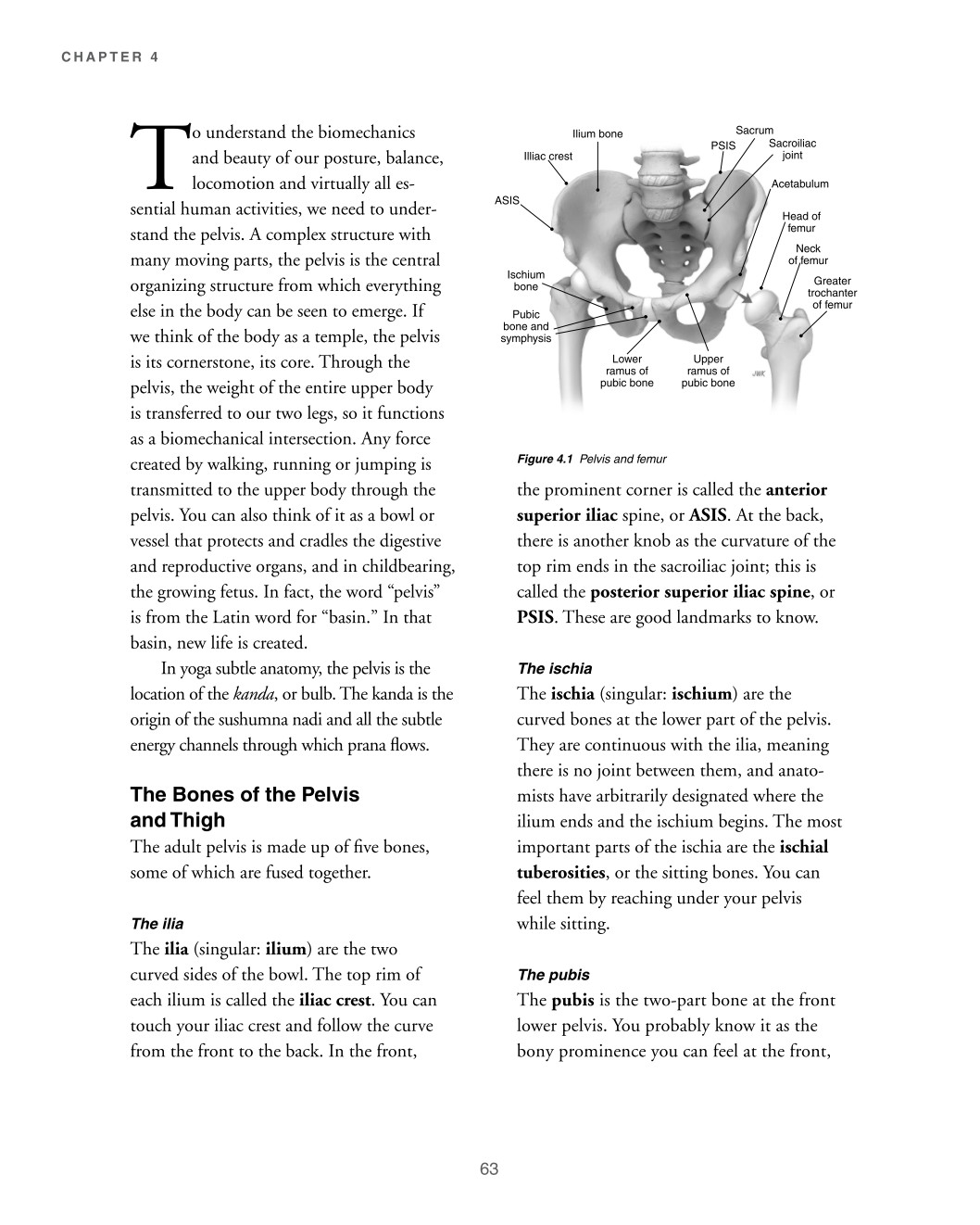

CHAPTER 4
T
o understand the biomechanics and beauty of our posture, balance, locomotion and virtually all es- sential human activities, we need to under- stand the pelvis. A complex structure with many moving parts, the pelvis is the central organizing structure from which everything else in the body can be seen to emerge. If we think of the body as a temple, the pelvis is its cornerstone, its core. Through the pelvis, the weight of the entire upper body is transferred to our two legs, so it functions as a biomechanical intersection. Any force created by walking, running or jumping is transmitted to the upper body through the pelvis. You can also think of it as a bowl or vessel that protects and cradles the digestive and reproductive organs, and in childbearing, the growing fetus. In fact, the word “pelvis” is from the Latin word for “basin.” In that basin, new life is created. In yoga subtle anatomy, the pelvis is the location of the kanda, or bulb. The kanda is the origin of the sushumna nadi and all the subtle energy channels through which prana flows. The Bones of the Pelvis and Thigh The adult pelvis is made up of five bones, some of which are fused together. The ilia The ilia (singular: ilium) are the two curved sides of the bowl. The top rim of each ilium is called the iliac crest. You can touch your iliac crest and follow the curve from the front to the back. In the front, ASIS Head of femur Neck of femur Ischium bone Pubic bone and symphysis Lower ramus of pubic bone Upper ramus of pubic bone Greater trochanter of femur
Ilium bone Sacrum PSIS Illiac crest Sacroiliac joint Acetabulum
Figure 4.1 Pelvis and femur the prominent corner is called the anterior superior iliac spine, or ASIS. At the back, there is another knob as the curvature of the top rim ends in the sacroiliac joint; this is called the posterior superior iliac spine, or PSIS. These are good landmarks to know. The ischia The ischia (singular: ischium) are the curved bones at the lower part of the pelvis. They are continuous with the ilia, meaning there is no joint between them, and anato- mists have arbitrarily designated where the ilium ends and the ischium begins. The most important parts of the ischia are the ischial tuberosities, or the sitting bones. You can feel them by reaching under your pelvis while sitting. The pubis The pubis is the two-part bone at the front lower pelvis. You probably know it as the bony prominence you can feel at the front,
63